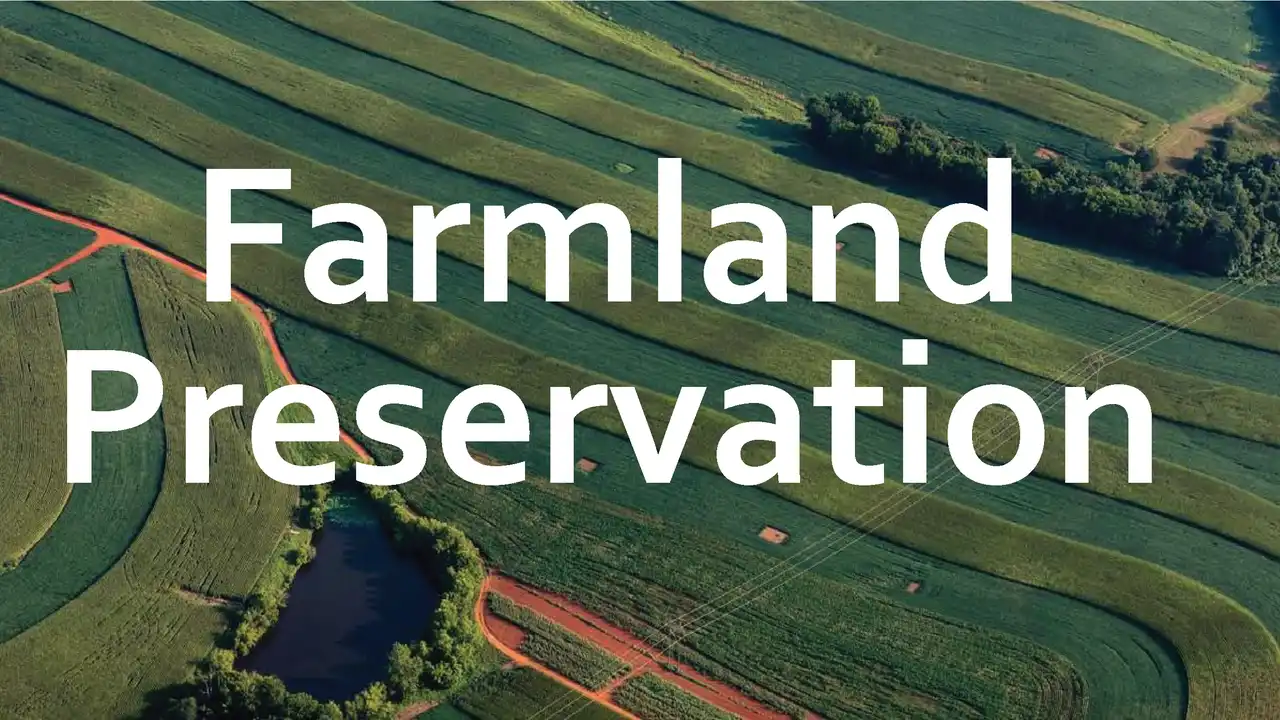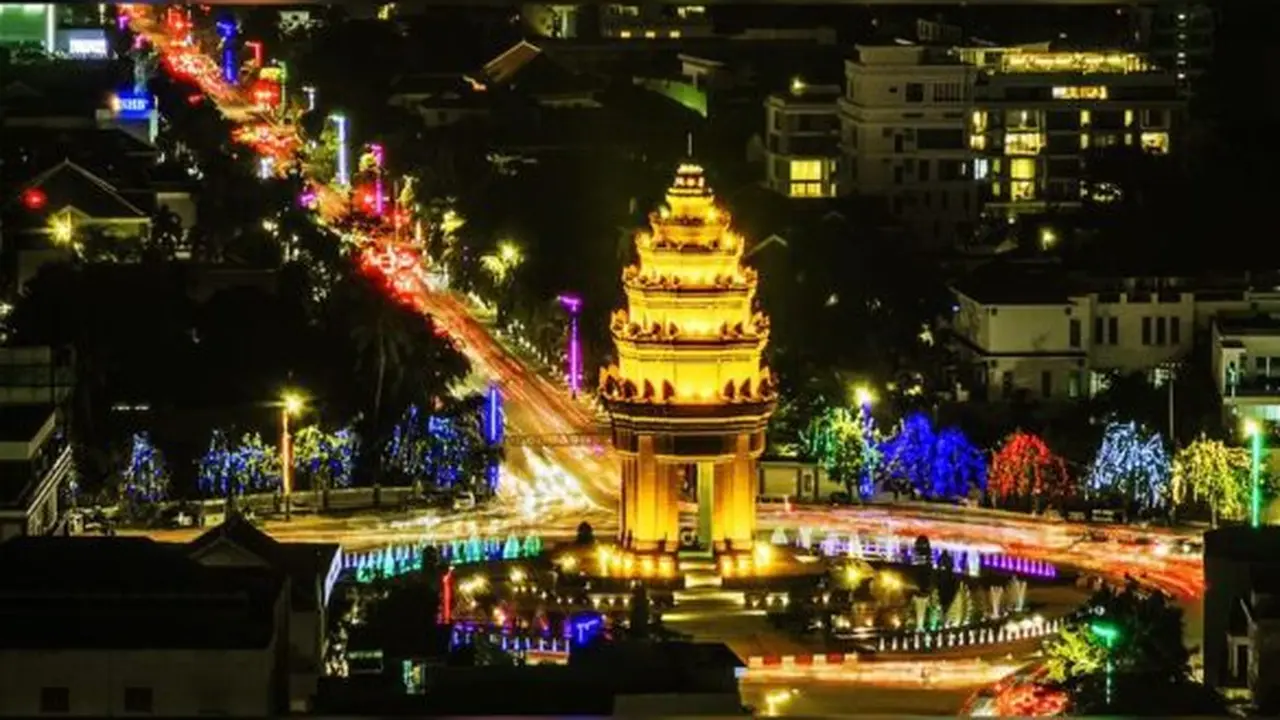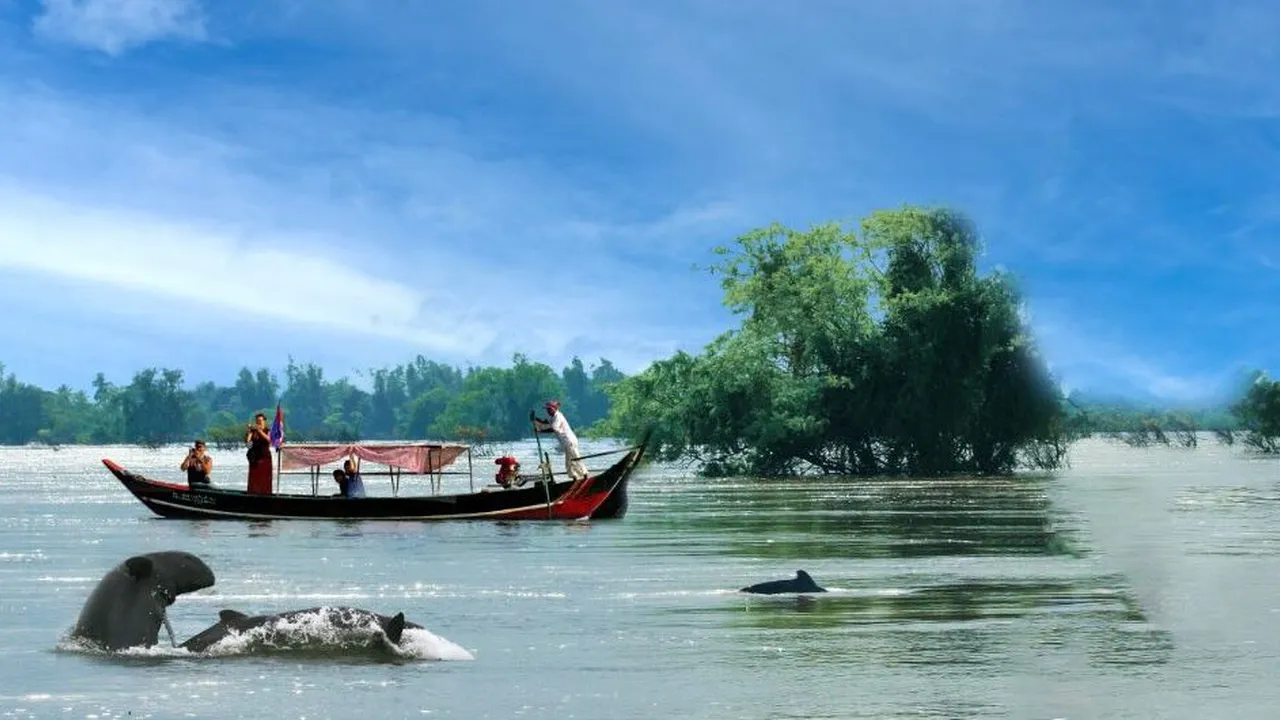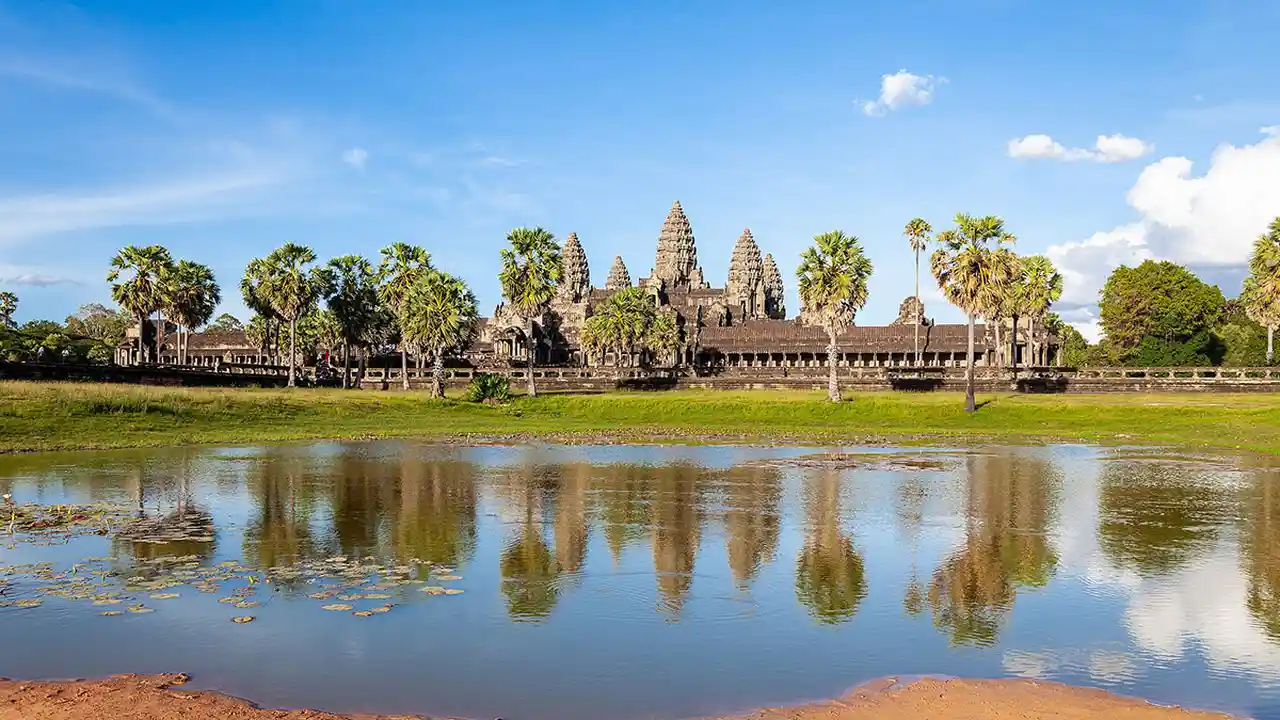Angkor Conservation Area: Understanding the Preservation Efforts for US Visitors

Introduction to Angkor’s Preservation Significance for American Tourists
Hey there, fellow travelers! Planning a trip to the magnificent Angkor Archaeological Park? Awesome choice! But before you get lost in the stunning temples and ancient history, let's talk about something super important: preservation. As US visitors, we have a responsibility to understand and respect the incredible efforts being made to protect this UNESCO World Heritage site. This isn't just about snapping cool photos (though you should totally do that!); it's about ensuring Angkor's beauty endures for generations to come.
Understanding the Angkor Conservation Area (ACA) and its Mission
The Angkor Conservation Area, or ACA, is the designated zone encompassing the major temples and surrounding areas of Angkor. Its mission is multifaceted, focusing on not only the physical preservation of the temples but also the sustainable management of the entire landscape, including its cultural heritage and the livelihoods of the local communities who live within the park. Think of it as a giant, multi-pronged effort to keep Angkor awesome for everyone. It involves archaeologists, architects, engineers, anthropologists, and even the local villagers who call Angkor home. Their work is crucial in mitigating the effects of tourism, climate change, and natural decay.
Key Challenges in Preserving Angkor: A US Visitor's Perspective
Preserving Angkor is no walk in the park (pun intended!). Several significant challenges require ongoing attention and innovative solutions. Let’s break them down from a US visitor's point of view:
- Tourism Impact: We love exploring, but our footsteps, literally, can wear down the delicate sandstone structures. Millions of visitors each year contribute to erosion and damage to the carvings and foundations. Think of it like repeatedly using the same path through a field – eventually, it becomes worn and bare.
- Climate Change: The tropical climate of Cambodia, with its intense monsoons and humidity, poses a constant threat. Water damage, vegetation growth, and temperature fluctuations all contribute to the deterioration of the stone. Imagine leaving a sandstone sculpture outside in Florida for a few centuries – it wouldn't look so good, right?
- Vegetation Encroachment: Those stunning trees growing through the temple walls? They look romantic, but their roots are slowly cracking and destabilizing the structures. It’s a constant battle to manage vegetation without harming the historical integrity of the site.
- Illegal Excavation and Looting: Sadly, some individuals seek to profit from Angkor's heritage by illegally excavating and selling artifacts. This not only damages the archaeological record but also deprives future generations of the opportunity to learn from these treasures.
- Funding and Resources: Preservation efforts require significant financial investment and skilled labor. Securing adequate funding and resources is an ongoing challenge, especially in a developing country like Cambodia.
Preservation Techniques and Strategies Employed at Angkor
So, how are these challenges being tackled? A variety of techniques and strategies are employed, blending traditional methods with modern technology:
- Anastylosis: This involves reassembling fallen or broken stones to reconstruct structures. Think of it as a giant jigsaw puzzle, where each piece needs to be carefully identified and put back in its place.
- Consolidation: This strengthens weakened stone surfaces to prevent further decay. Specialized mortars and resins are used to fill cracks and stabilize the stone. It’s like giving the stone a much-needed spa treatment!
- Vegetation Management: Careful pruning and removal of vegetation are essential to prevent root damage. This is a delicate process, requiring expertise to avoid harming the temples.
- Drainage Systems: Improving drainage systems helps to divert water away from the temples, reducing the risk of water damage. Think of it as building a better raincoat for Angkor.
- Documentation and Research: Detailed documentation and ongoing research are crucial for understanding the condition of the temples and developing effective preservation strategies. Archaeologists use advanced technologies like 3D scanning and photogrammetry to create accurate models of the structures.
- Community Involvement: Engaging local communities in preservation efforts is essential for long-term sustainability. This includes providing education, training, and employment opportunities related to heritage conservation.
How US Visitors Can Contribute to Angkor's Preservation: Responsible Tourism Practices
Okay, so you're ready to explore Angkor. Here's how you can be a responsible traveler and contribute to its preservation:
- Stay on Designated Paths: Avoid walking on the stones or climbing on fragile structures. Stick to the designated paths and viewing areas. This helps to minimize erosion and damage.
- Respect the Site: Refrain from touching the carvings or writing on the walls. Treat Angkor with the respect it deserves as a sacred and historical site.
- Dress Appropriately: Angkor is a religious site, so dress modestly. Cover your shoulders and knees when visiting temples.
- Dispose of Trash Responsibly: Don't litter. Use designated trash receptacles or carry your trash with you.
- Support Local Businesses: Buy souvenirs from local artisans and support local restaurants and businesses. This helps to contribute to the local economy and provides incentives for preserving Angkor.
- Learn About the Culture: Take the time to learn about Cambodian culture and history. This will enrich your experience and help you to appreciate the significance of Angkor.
- Donate to Preservation Efforts: Consider donating to organizations that are working to preserve Angkor. Your contribution can make a real difference. Look for reputable organizations with transparent accounting practices.
- Spread the Word: Encourage others to visit Angkor responsibly. Share your experiences and promote sustainable tourism practices.
Recommended Products for Responsible Angkor Exploration
Let's gear up for your Angkor adventure with some responsible and practical products:
Sun Protection: Keeping Your Skin Safe While Respecting the Environment
The Cambodian sun can be intense! Protect your skin with a reef-safe sunscreen. These sunscreens are formulated without chemicals that can harm coral reefs and marine life. Think of it as protecting yourself and the environment at the same time!
- Product 1: Thinksport SPF 50+ Sunscreen. This is a popular choice for its broad-spectrum protection and mineral-based formula. It's water-resistant and free of harmful chemicals. Usage Scenario: Perfect for all-day temple exploring. Apply liberally before heading out and reapply every two hours, especially after swimming or sweating. Price: Around $20 for a 3oz tube.
- Product 2: Badger Balm SPF 30 Unscented Sunscreen. Another excellent mineral-based option with a simple, natural formula. It's biodegradable and comes in a recyclable container. Usage Scenario: Ideal for those with sensitive skin. Its unscented formula minimizes the risk of irritation. Apply before venturing into the sun and reapply frequently. Price: Approximately $18 for a 2.9oz tin.
- Comparison: Both Thinksport and Badger Balm offer excellent sun protection and are reef-safe. Thinksport is slightly more water-resistant, while Badger Balm has a simpler ingredient list. Choose the one that best suits your skin type and preferences.
Reusable Water Bottle: Staying Hydrated Sustainably
Staying hydrated is crucial in the Cambodian heat. Avoid single-use plastic bottles and bring a reusable water bottle. Many hotels and restaurants offer free water refills.
- Product 1: Hydro Flask 24 oz Standard Mouth. This insulated stainless steel bottle keeps your water cold for hours. It's durable, leak-proof, and comes in a variety of colors. Usage Scenario: Perfect for keeping your water ice-cold throughout the day, even in the hot Cambodian sun. Price: Around $35.
- Product 2: Nalgene Tritan 32 oz Wide Mouth. A classic, durable, and BPA-free water bottle. It's lightweight and easy to clean. Usage Scenario: A great, simple option for carrying plenty of water. Its wide mouth makes it easy to add ice or clean. Price: Approximately $12.
- Comparison: Hydro Flask offers superior insulation, keeping your water colder for longer. Nalgene is a more affordable and lightweight option. Consider your budget and how important cold water is to you.
Comfortable Walking Shoes: Protecting Your Feet on Ancient Stones
You'll be doing a lot of walking at Angkor, so comfortable and supportive shoes are essential. Choose shoes that are breathable and provide good traction.
- Product 1: Merrell Moab 2 Vent Hiking Shoe. These shoes are known for their comfort and durability. They provide excellent support and traction, making them ideal for exploring temples. Usage Scenario: Perfect for long days of walking on uneven surfaces. Their breathable design helps keep your feet cool and dry. Price: Around $100.
- Product 2: KEEN Newport H2 Sandal. These sandals offer a good balance of comfort and protection. They have a closed toe to protect your feet from rocks and debris, and they're water-resistant. Usage Scenario: A great option for warmer days when you want more ventilation. Their water-resistant design makes them suitable for exploring near water features. Price: Approximately $110.
- Comparison: Merrell Moab 2 provides more support and protection, while KEEN Newport H2 offers more ventilation and water resistance. Choose the one that best suits your preferences and the weather conditions.
Lightweight Backpack: Carrying Essentials Responsibly
A lightweight backpack is essential for carrying your water bottle, sunscreen, snacks, and other essentials. Choose a backpack made from durable and sustainable materials.
- Product 1: Osprey Talon 22 (Men's) / Tempest 20 (Women's). These backpacks are lightweight, comfortable, and offer plenty of storage. They're made from recycled materials and are built to last. Usage Scenario: Perfect for carrying all your essentials for a full day of exploring. Their comfortable design allows you to carry heavy loads without strain. Price: Around $130.
- Product 2: Patagonia Black Hole Pack 25L. This backpack is durable, water-resistant, and made from recycled materials. It's a great option for everyday use and travel. Usage Scenario: A versatile backpack that can be used for exploring temples, hiking, or everyday errands. Its water-resistant design helps protect your belongings from rain. Price: Approximately $130.
- Comparison: Osprey Talon/Tempest are designed for hiking and offer more specialized features, while Patagonia Black Hole is more versatile for everyday use. Consider your specific needs and preferences.
Conclusion? Nah, Let's Keep Exploring!
So there you have it! Understanding the preservation efforts at Angkor and practicing responsible tourism isn't just about following rules; it's about showing respect for this incredible site and ensuring its survival for future generations. Now go explore, learn, and have an amazing time! Just remember to tread lightly and leave only footprints (and maybe a few awesome photos!).
:max_bytes(150000):strip_icc()/277019-baked-pork-chops-with-cream-of-mushroom-soup-DDMFS-beauty-4x3-BG-7505-5762b731cf30447d9cbbbbbf387beafa.jpg)






